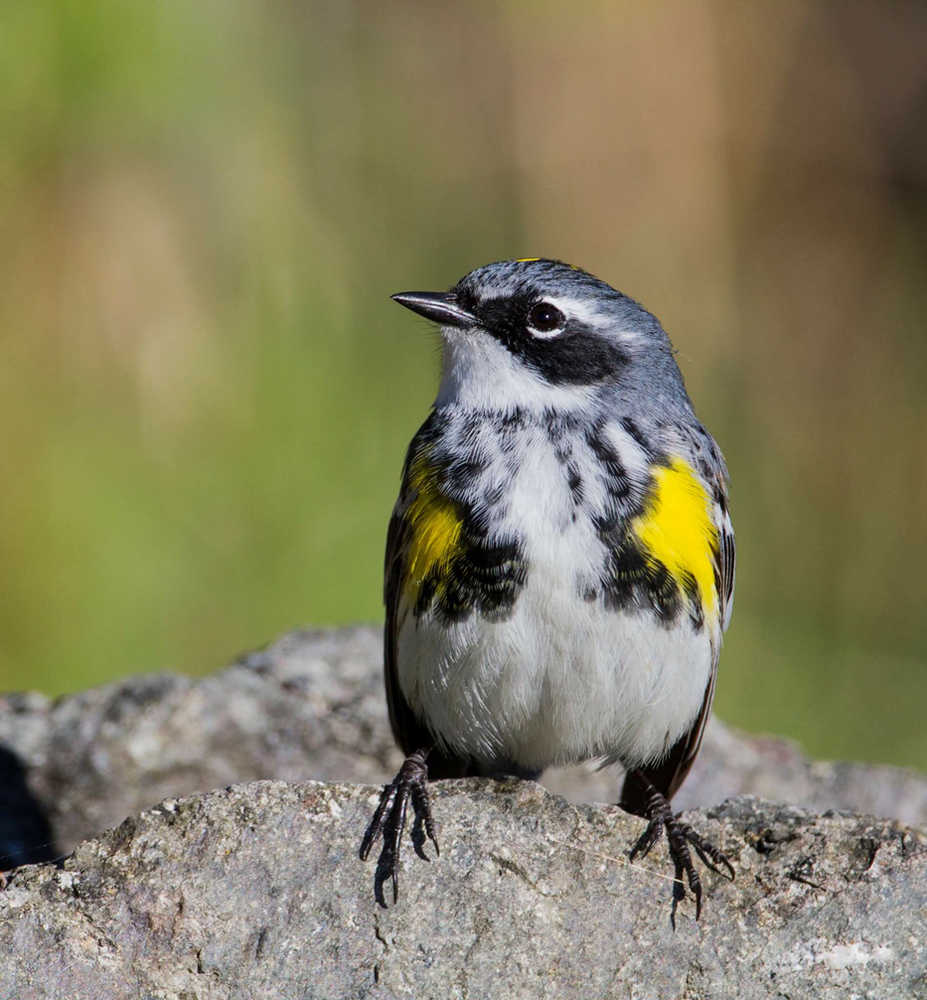The early bird catches the worm they always say, but what if you want to catch the bird? You get up even earlier. Hiking through the woods at 3 a.m., my excitement was only slightly marred by the exhaustion of getting up so early. It was about a 30 minute hike and the rising sun had met us just as we reached the plot. On this fine morning (quickly warming up with no wind) in the last week of June, I was going to experience my first ever Breeding Bird Survey.
Thinking I would hear more birdsong out in the field than I would all summer I was eager to get started. However, not long into the survey, I realized this was going to be a slow day. There were few species singing: an American Robin here, a Dark-eyed Junco there, with a Ruby-crowned Kinglet or Yellow-rumped Warbler sometimes calling in-between. As the morning went on we did hear quite a few more species but not in the volume that we had expected.
Jump back a few months to the middle of April, after the relatively mild winter and warm spring this year, biologists at the Kenai National Wildlife Refuge began to notice several species arriving and singing their nuptial songs much sooner than expected. This led to the question of whether or not birders and biologists would be able to catch the peak of the season if bird populations were surveyed in the last three weeks of June when they have been historically conducted.
That’s where I — a biology intern from Oregon State University — came in. With the help of Supervisory Biologist John Morton I designed a pilot study to see if there has been a shift in the sampling window to catch the peak of the breeding season.
I set up a Wildlife Acoustics Song Meter (SM2) in a mature spruce and birch forest, adjacent to a black spruce wetland on Headquarters Lake within the Kenai Refuge. The SM2 is an acoustic recorder made especially for bird songs. I set it to record for one minute intervals every fifteen minutes between the hours of 4 and 10 a.m. There were a total of 25 opportunities each morning for a species to be recorded. The SM2 was deployed on April 30 and then retrieved on June 30.
The SM2 recorded 24 species of songbirds, and we collected enough data on seven of those species to examine the frequency of their singing. Early on in the transcription, I began to notice that there was a high volume of birdsong a lot sooner than expected. Of course, resident songbirds generally start nuptial singing earlier in the spring than migrant songbirds. So I categorized Common Redpoll and Pine Siskin as resident breeders, and Dark-eyed Junco, Varied Thrush, Ruby-crowned Kinglet, Yellow-rumped Warbler, and Swainson’s Thrush as nonresident breeders (migrants). I then averaged the frequency with which they called during their 25 sampling windows each day, a measure of their detectability, and graphed it (see figure).
For resident species, the best time to survey was the last two weeks in May. For non-residents, the best time to survey was the last week in May and first week in June. The combined window was around the last week in May, suggesting there has been more than a two week shift in the window of optimal detectability of songbird species on the Kenai Peninsula.
Population estimates of birds surveyed during the last three weeks in June would be based on 31 percent and 61 percent lower song detectability of resident species and non-resident species, respectively, than if they had been surveyed earlier in the spring. What this means in real terms is that had we been surveying birds this year during the usual late June period, our data would have shown a significant decline in bird populations when, in fact, it was just a change in breeding phenology.
Could this have been an anomalous year simply because it was so freakishly warm? Maybe, but eBird (www.ebird.org) records for the Kenai Peninsula since 2007 indicate earlier arrival records for 33 migratory species, and later departure records for 38 species.
Refuge biologists aren’t quite ready to change their bird survey protocols based on my pilot study. But the results confirm what they’ve been suspicious of for a while. The climate is changing and the very methods used to detect wildlife responses to that change need to be re-examined.
The early bird catches the worm but to catch the bird you must get up even earlier — this year it was two weeks earlier but what will next year bring?
Mariah Stephens was an undergraduate intern with the biology program this summer at Kenai National Wildlife Refuge. Find more information at http://www.fws.gov/refuge/kenai/ or http://www.facebook.com/kenainationalwildliferefuge.

